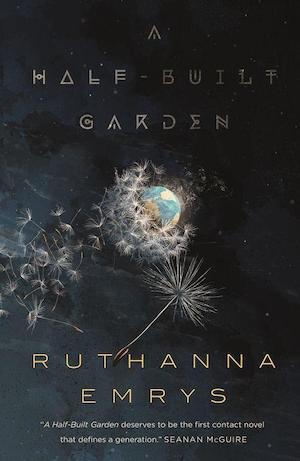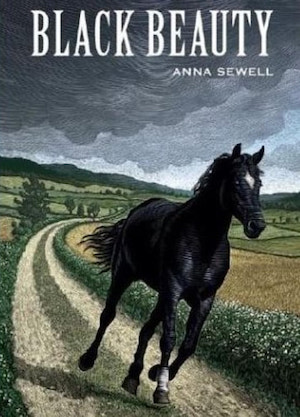Somehow, through this long series, though I’ve read and reread numerous classic horse books, I never got around to rereading the mother of them all. Anna Sewell’s Black Beauty is a staple of every horsekid’s library. It’s iconic. It’s classic for a reason.
I had not realized how long it’s been since I last reread it. It’s an essential part of who I am as a reader. I was sure I had revisited it sometime in the last decade or two. But when I actually sat down and read it, it dawned on me that the last time I immersed myself in it, I owned neither a horse nor a farm.
Those two things changed the book for me completely. The experience of a rider in a boarding or a lesson barn is completely different than that of the barn owner, the breeder, or the trainer. The me who last read the book had more in common with the livery-stable clients who rented out Beauty than the succession of people who bred, raised, trained, and cared for him.
Add to that, in the interval, I gained a great deal more experience as a writer as well as a reader. I learned from the inside out how a book is written, how a plot develops, how characters grow on the page. I not only lived the horse experience, I lived Sewell’s experience as she wrote the book.
The digital version I found, by pure luck, included a short biography of the author. I had not known that Anna Sewell was disabled, that she took to carriage driving because she had damaged her feet and ankles in an accident as a young girl. For her, horses represented both freedom and responsibility. They also, clearly, were more to her than simple animals. I don’t think it’s just a literary device that her book is subtitled, The Autobiography of a Horse.
This book was a labor of love, written over a number of years; it was published shortly before she died. She hoped it would find an audience, and that audience would pay attention to her message. She never lived to see that hope fulfilled.
Buy the Book


A Half-Built Garden
I don’t know how she would have felt about the fact that the book found immortality as a work for children. She wrote it for adults. She wanted her readers to see horses as people, to understand that they are living, feeling beings, and to extend that understanding to their care and training. She might have appreciated that it’s best to catch an audience young, while they’re still impressionable, but she was aiming at their elders.
Child and teen me loved it and cried in all the right places, but adult me, on the other side of decades of horses, picked up so much more. It’s striking how timeless so much of it is. The daily minutiae of horse care is remarkably similar from 1877 to 2022. Horses live in barns and stalls, and if they’re lucky have access to pastures and paddocks; they eat hay and grain; they need farriery, they need veterinary care.
In 2022 they’re no longer the main source of transport. Driven horses are much less common now than ridden ones. But the way they’re raised, the methods by which they’re trained, have changed very little. There’s still a conflict between people who use horses as equipment and people who treat them as fellow sentient beings. Abuse and overuse are still a thing, and horses who may have had a gentle beginning all too often end up on a long downward slide to the slaughterhouse.
Even the things that seem different aren’t necessarily so. There are disciplines still that consider a five-year-old horse “aged” and regard twenty as a great age, as happens in Beauty’s world. But even in the 1800s, there were horses who lived well up in their twenties and thirties—one example I wrote about last time, the great Thoroughbred sire Lexington, became blind at a young age (apparently from an infection), but lived to be twenty-five. That’s a respectable age now as then.
Sewell’s book is the first known novel written from the point of view of an animal. There’s a long history in the West and in English of beast fables and talking-animal stories, of animals as symbols and allegorical constructs. But a straightforward fictional autobiography, a first-person account of the life of an animal, had not been done before.
That Sewell could write such a book about such a character says so much about how she perceived horses. She knew all too well how horses were treated and mistreated, and she had strong feelings about abusive methods and equipment, especially the check rein, a strap that forced a horse to hold his head up while in harness. It was a fad, a fashion, a look. It interfered seriously with the horse’s ability to pull a carriage. (It’s still being used, with some modifications. Sewell would not be pleased to hear that.)
She would not have known the term “biomechanics,” but she understood how a horse needs to balance itself. Nor was she concerned simply with his ability to function. She cared about his feelings; about his ability to feel pain and frustration. She knew that horses form friendships with each other and with humans; that they care about their friends and grieve when they’re gone.
One thing that really struck me was the complete lack of choice that a horse has in where he goes and what happens to him there. Even when Beauty is loved, if his owner’s circumstances change, he is sold on to someone else. The seller tries to find him a good home, but there’s no guarantee. All too often, even if his new owner cares about him, something will happen, either to the owner or the horse, and on he’ll go to yet another, possibly less desirable place. As he grows older, as accidents and human error cause injuries and blemishes, his value diminishes. He’s less and less likely to find a soft landing.
That’s a tragedy, and it’s as true now as it was then. The horse auctions are full of horses who aren’t as bright and shiny as they used to be, who are older or less sound, who are no longer useful to their owners. Worst of all are the very old ones whose owners can’t bear to put them down and send them to auction, where they all too often end up at the killers.
Beauty is lucky. A kind person rescues him, and the groom to whom he’s assigned turns out to be an old friend. We can assume that he’s found his forever home as they say in the rescue business, and will no longer be passed from hand to hand and from one uncertain future to the next.
That story is just as true now as it was when the book was written. The reader, young or old, who immerses themself in Beauty’s world is living a life that horses have lived for time immemorial. There’s a reason why the book has never gone out of print; why it’s been read and reread and loved for so long.
The adult who reads it can get even more out of it than they could as a child. It’s deep and accurate and true. So true that, as I was reading about the bad stone that lames Beauty, I went out to find one of my mares walking lame—and she had picked up a stone just like it: pointed on the inside, rounded on the outside, digging deep into the hoof. I dug it out and gave her medication that Beauty would not have had, for the pain and inflammation, but in every other respect, my white mare and Black Beauty shared an experience across the centuries.
Judith Tarr is a lifelong horse person. She supports her habit by writing works of fantasy and science fiction as well as historical novels, many of which have been published as ebooks. She’s written a primer for writers who want to write about horses: Writing Horses: The Fine Art of Getting It Right. She lives near Tucson, Arizona with a herd of Lipizzans, a clowder of cats, and a blue-eyed dog.










